
Google Classroom for kindergarten may seem overwhelming and intimidating. Previously, I myself thought it would be too difficult for my kindergarten students to use. With the push of distance learning, I gave it a try, and I was surprised by the features it offers and its ease of use.
If you’re wanting to try Google Classroom but not sure where to start I can help. To begin, you can learn more about Google Classroom and how to set it up by reading my post “Using Google Classroom in Kindergarten: Getting Started.”
Why Use Google Classroom for Kindergarten?
Google Classroom in kindergarten has many benefits.
- Google Classroom is free with any Google account
- It works on a variety of devices (Chromebooks, Desktops, Laptops, Tablets)
- Google Classroom can be used in the classroom, at home, and for distance learning
- Students can use Google Classroom for morning work, centers, homework, or as fast finishers
- Using Google Classroom integrates technology into learning
- Google autosaves eliminating lost work
- Students are engaged when using Google Classroom
- Teachers and students can collaborate through Google Classroom
- When using Google Classroom you no longer have to copy, collect, and return papers
- Going digital saves paper and copies
- Google Classroom decreases prep time
- Differentiation is possible and easy with Google Classroom
- You can schedule and save posts and assignments on Google Classroom
Google Classroom activities work for all subject and content areas. For the most part, I love to use them as centers or to follow up and practice a skill/concept we have learned in kindergarten. The following are a few of the activities I love to use with my students to support literacy and math instruction.
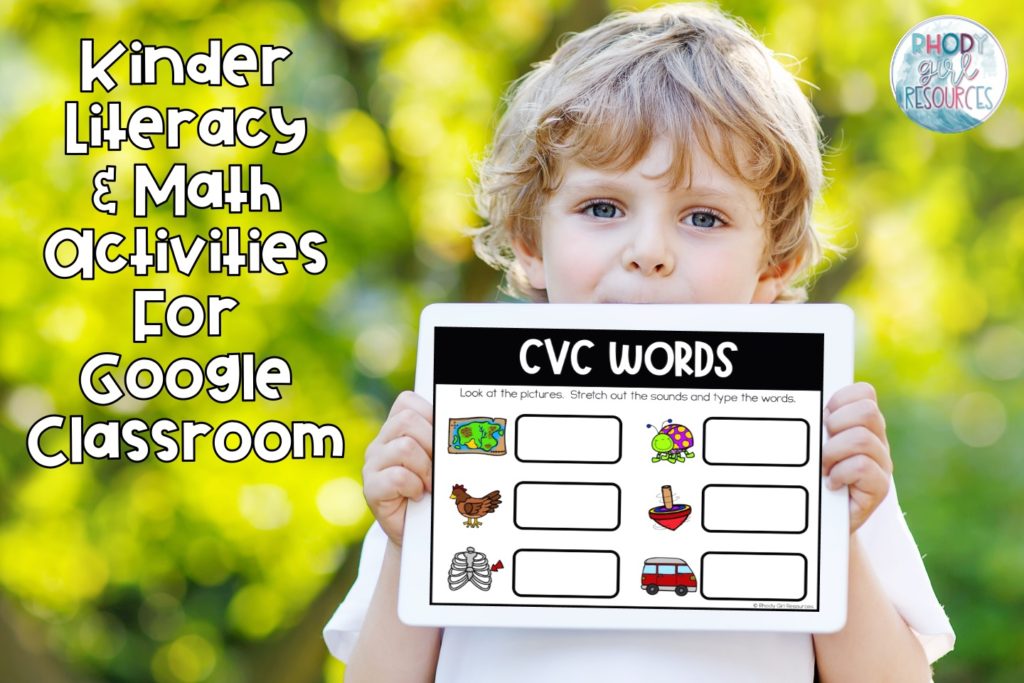
Must-Have Google Classroom for Kindergarten Literacy Activities
Literacy instruction in kindergarten is comprised of skills falling under the categories Reading: Literature, Reading: Informational Text, and Reading: Foundational Skills. To support literacy instruction sight words, phonemic awareness, and phonics can all be practiced through Google Classroom assignments.
Sight Words
Sight words are a large component of kindergarten reading and writing instruction. In general, sight words require practice and exposure to help students master, learn, and apply them. Crack the code activities are great because they practice sight words but also review beginning sounds and letters. There are two versions included in each of my Google Slide sight words activities. The first version allows students to drag the letters to match each picture, building a sight word. In the second version, students type the letters, which also practices keyboarding skills. These activities are available for pre-primer, primer, and first-grade sight words.
Phonological Awareness
Phonological awareness is the ability to hear, identify, and manipulate sounds. For example, skills such a rhyming, syllables, counting the number of words in a sentence, and isolating sounds are all phonological awareness skills. In this case, students look at two pictures and decide if they rhyme using Google Slides.
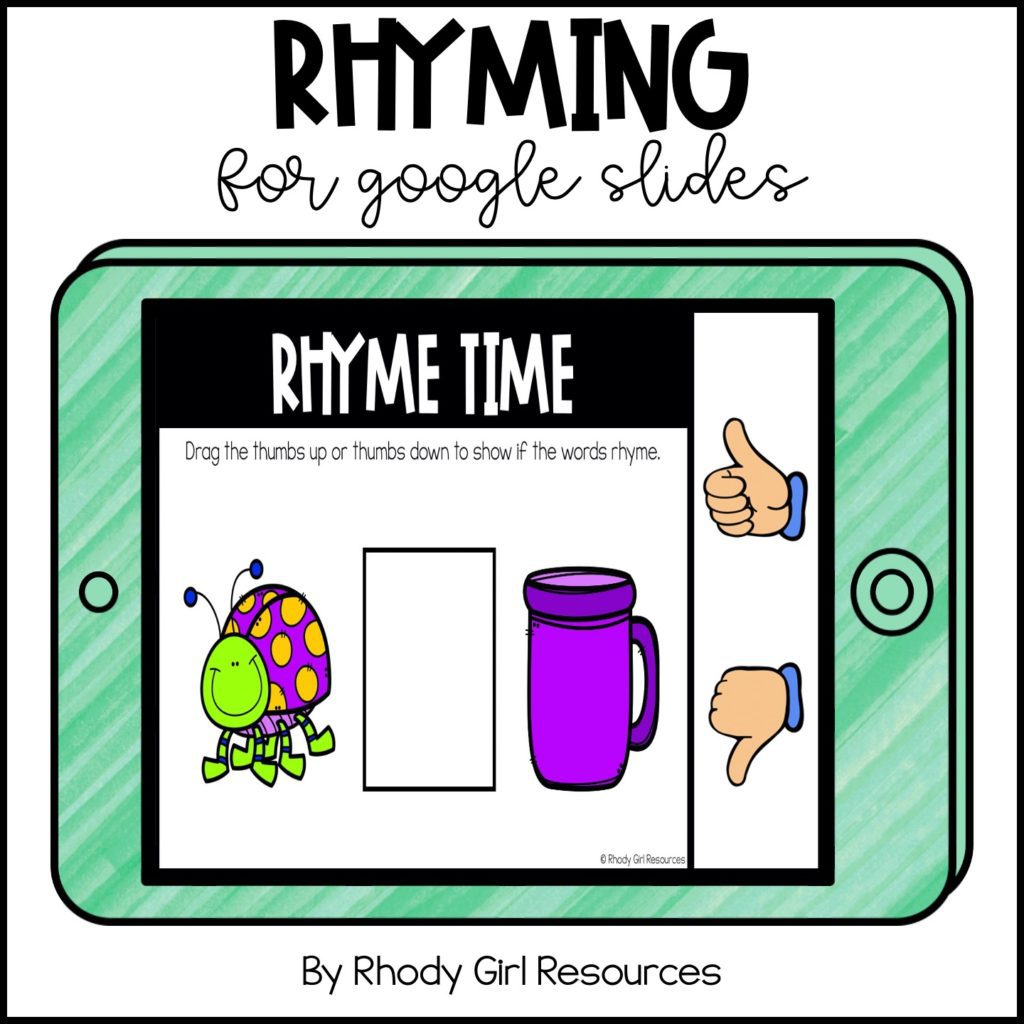
Phonics
Phonics is a major component in teaching children to read. In general, Google Slides makes it easy to drag/manipulate letters or type. Using Google Slides you can practice the alphabet, CVC words, blends, digraphs, and more!
Grammar
Grammar is another literacy component that can be practiced using Google Slides. This set includes 3 different activities focusing on nouns and verbs. First, students look at an image. Then they drag a check mark to identify the image as a person, place, or thing. Next, students can sort 3 images by person, place, or thing. Finally, students look at an image and determine if it shows a noun or verb.

Must-Have Google Classroom for Kindergarten Math Activities
Kindergarten Math concepts fall into 5 categories: Counting & Cardinality, Operations & Algebraic Thinking, Numbers & Operations in Base Ten, Measurement & Data, and Geometry. Many of these concepts require concrete and hands-on practice. During distance learning and other circumstances, students may not have manipulatives available to them. Google Slides activities provide the opportunity to move and manipulate shapes, counters, etc. using a mouse or their finger. As a result, Google Slides provides hands-on exposure and helps increase engagement.
Counting & Cardinality
Counting & Cardinality is used daily, making it an essential skill. In general, Counting and Cardinality activities focus on numbers and counting. The following Google Slides activities allow students to practice counting and cardinality skills including number order and counting groups to tell how many.
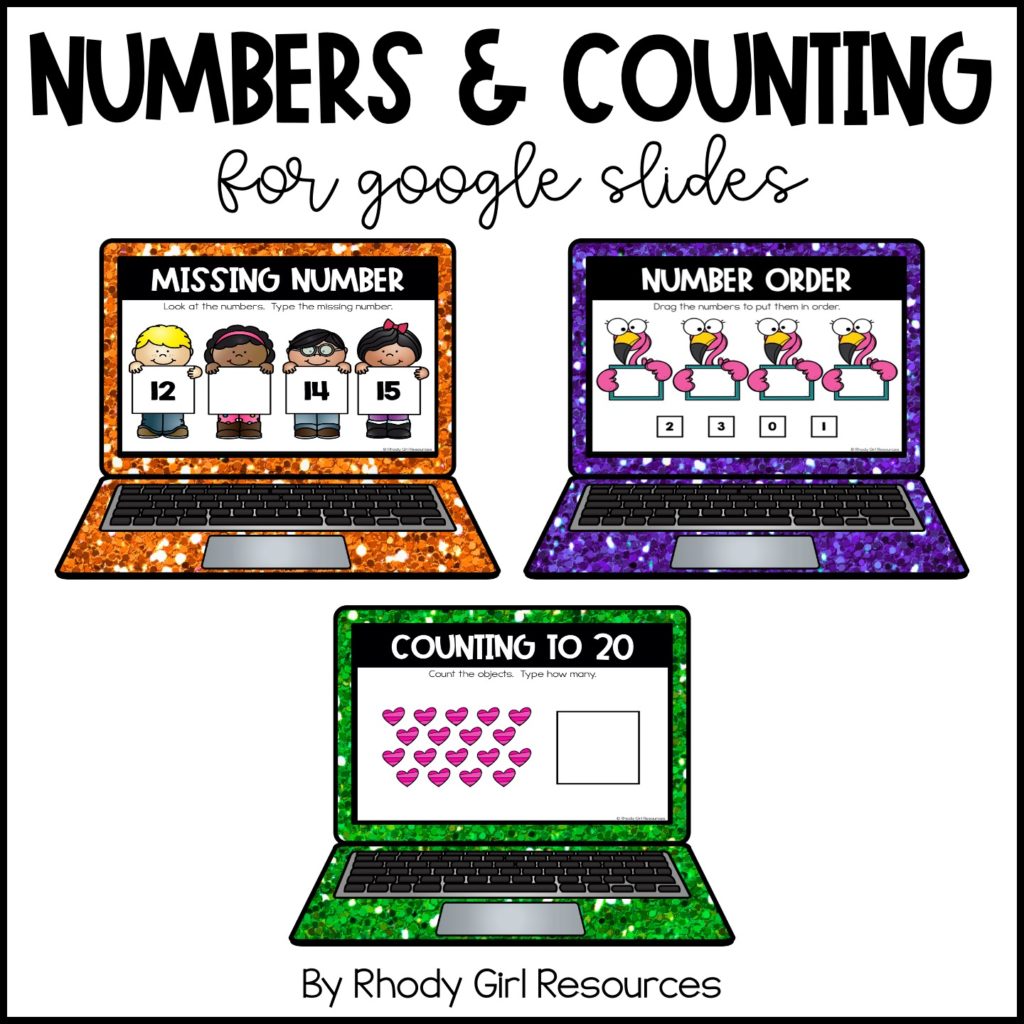
Operations & Algebraic Thinking
In kindergarten, Operations & Algebraic Thinking focuses on addition and subtraction. Using different representations such as tallies, fingers, dice, and ten frames students can practice putting things together to add and build fluency.
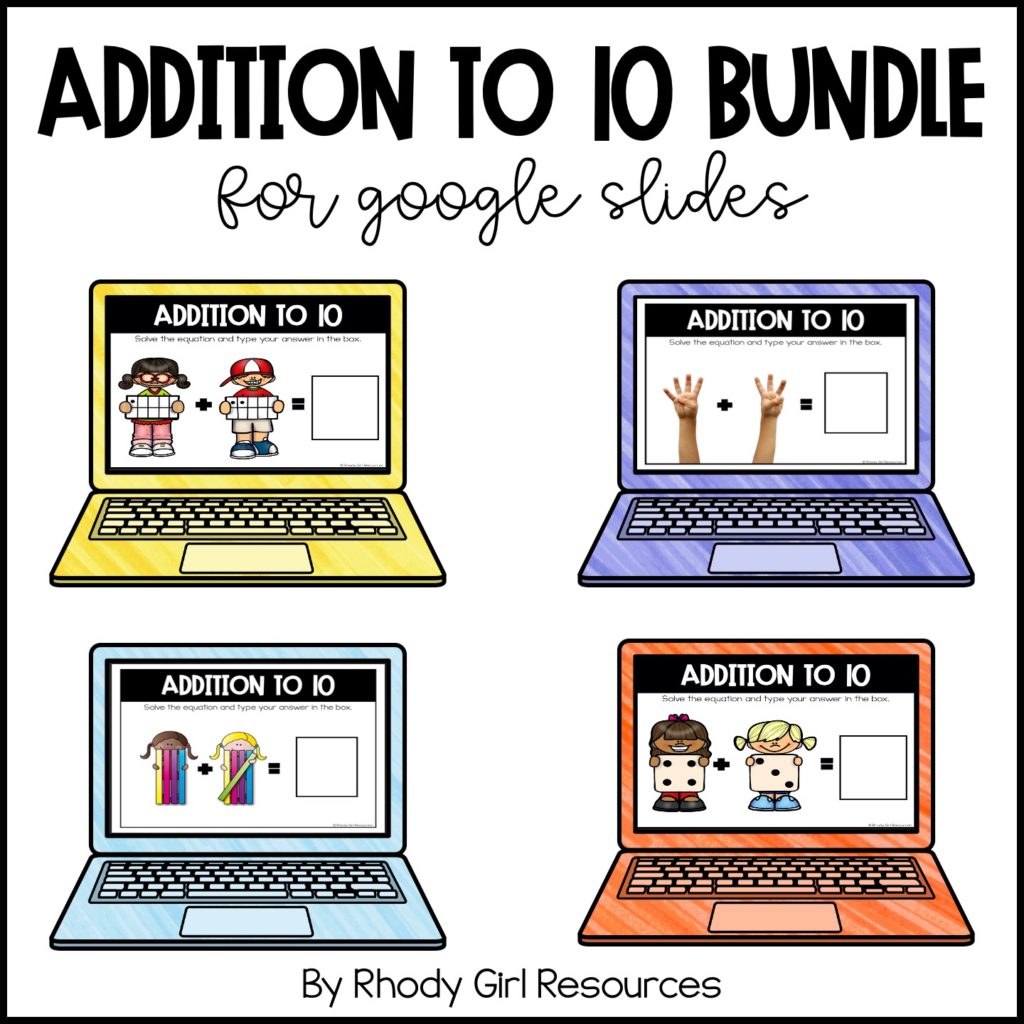
Numbers & Operations in Base Ten
For Numbers & Operations in Base Ten students work to compose and decompose numbers 11-19 into tens and ones. Using Google Slides you can expose students to expanded form, number bonds, and base ten blocks.
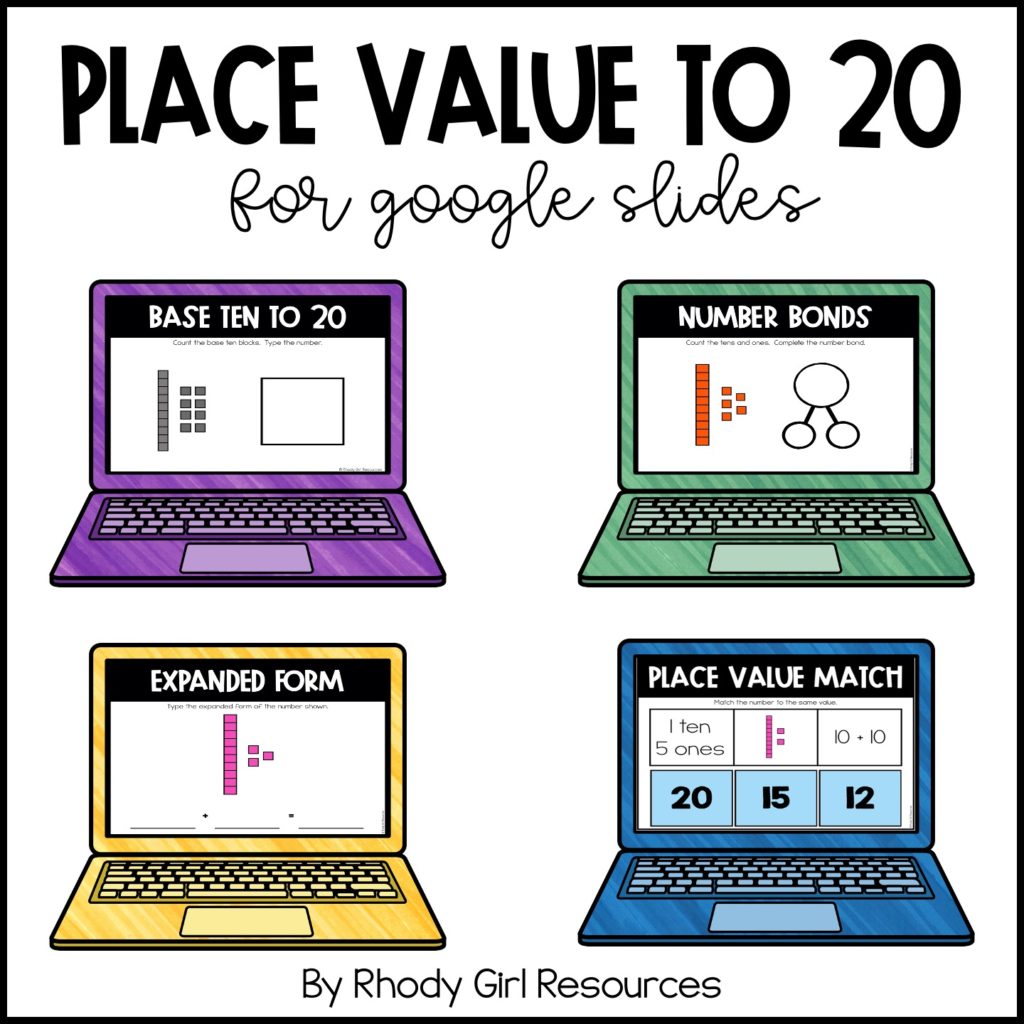
Measurement & Data
For measurement and data students work to collect data, graph, and compare measurable attributes such as heavier, lighter, longer, shorter. There are many ways to practice these concepts with the use of Google Slides. Google Slides activities provide the opportunity to build a graph, analyze data on a graph, use images to practice nonstandard measurement, and look at images to compare their size, length, and height.
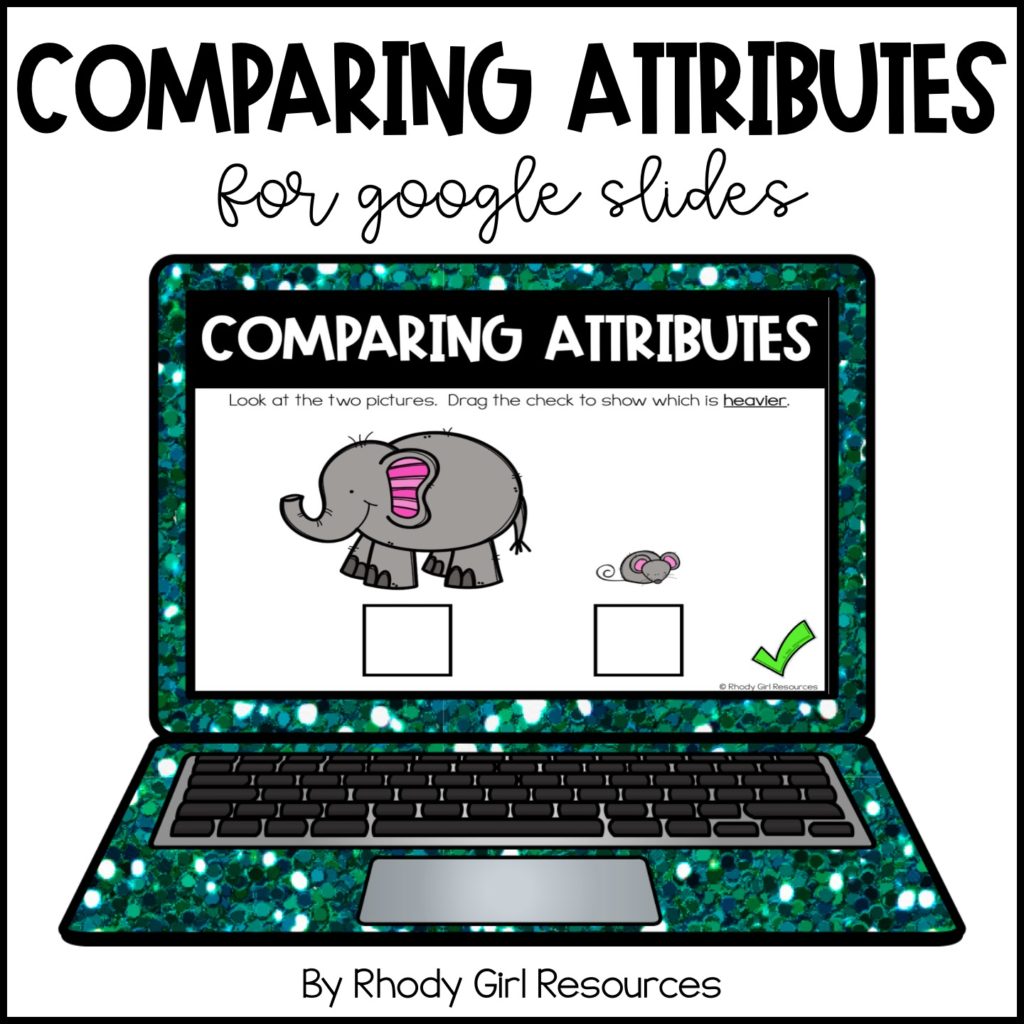
Geometry
Within Geometry, kindergarten students work on identifying and naming 2D and 3D shapes. They also use 2D shapes to compose other shapes. If you don’t have enough shape blocks or access to shapes, digital shapes can help! Students can drag and turn shapes, using them to make new shapes with Google Slides.
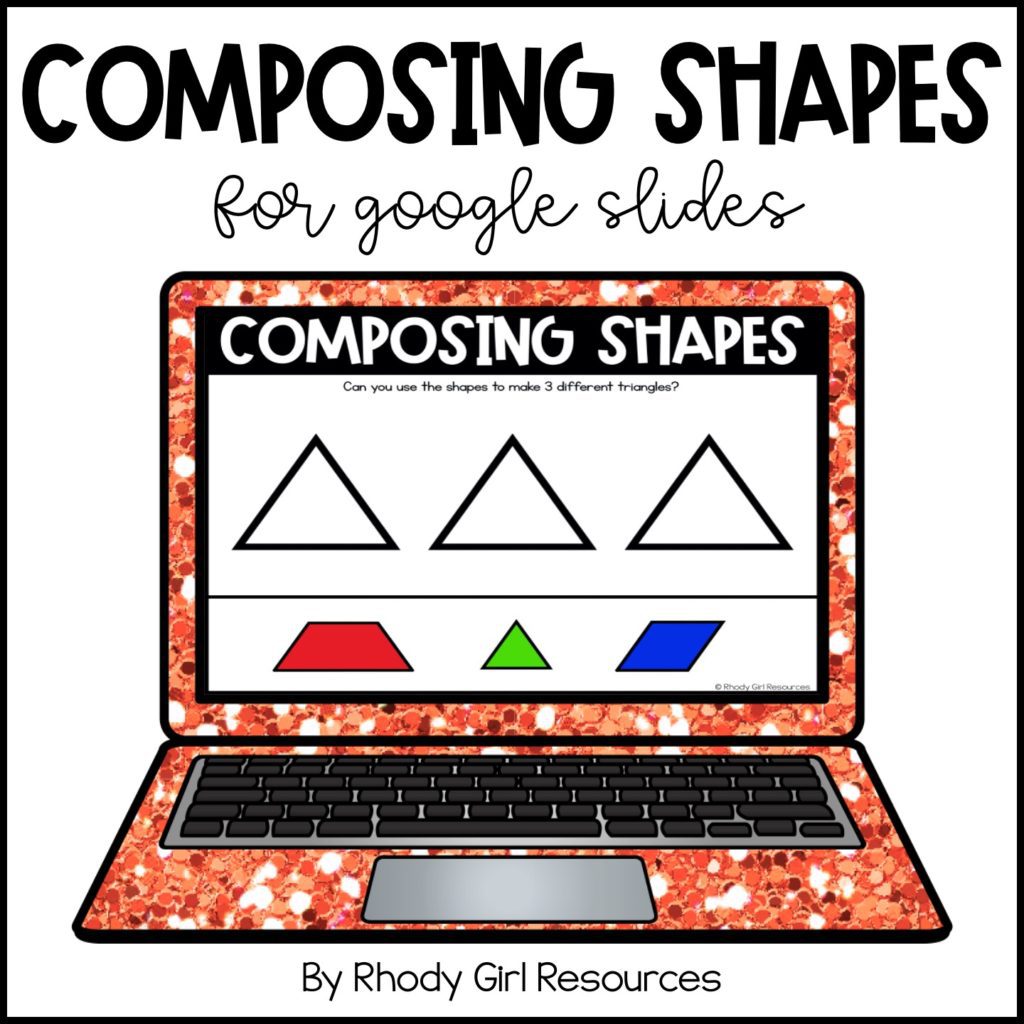
Do you use Google Classroom with your students? Grab the freebie below to give it a try or add to your collection!











